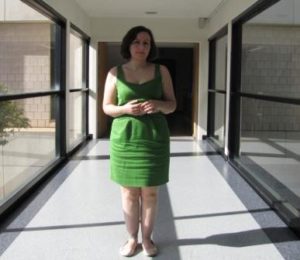
A second viewing in a police line-up may help more eyewitnesses identify the culprit, new research from Flinders University reveals.
The study of 400 South Australians from varying demographics, conducted between 2012 and 2013, found that offering a second ‘lap’ in a sequential police line-up could increase the number of positive identifications without reducing the overall accuracy of the witnesses’ decisions.
In police line-ups, witnesses see a police suspect (who may be guilty or innocent) alongside several innocent volunteers. An increasingly common testing method is the sequential line-up, where members are shown one by one, rather than in a single group. Many jurisdictions that have adopted the sequential line-up allow witnesses to see a second lap of the line-up if requested.
Chief investigator Dr Ruth Horry, based in Flinders School of Psychology, said the study explored the impact of additional line-up laps on the number of guilty suspects identified and the overall accuracy of decisions.
Contradicting existing research, she said accuracy was stable from the first to the second lap, however the number of guilty culprits identified increased significantly.
“The rate of mistakes in police line-ups is very high – people either wrongly identify someone they’ve never seen before, which is particularly serious if the person is innocent and if that person happens to be the police suspect, or they miss the offender,” Dr Horry said.
“Despite such a high rate of errors, there’s very little research on the effect of sequential line-up laps on accuracy, and most of these studies have significant flaws,” she said.
“The most comprehensive study to date argues that you get a drop in accuracy from the first to the second lap because some witnesses don’t really know who the offender is but feel compelled to pick somebody.
“Rather than having a clear idea of the bad guy, the study suggests that some witnesses will pick anyone in the second lap, which obviously means a huge drop in accuracy, but this doesn’t fit with what we found.”
Dr Horry said her study showed a second lap could actually increase the number of offenders identified because some witnesses are being overly cautious in the first lap but feel confident enough to identify the culprit in the second lap.
“It’s not that witnesses don’t know who to pick, they’re just being too cautious in the first lap.
“But if they’re offered a second lap they tend to make a correct identification.
“Though some innocent suspects were also identified in the second lap, the increase in false identifications was much smaller than the increase in correct identifications. Consequently, a lot more bad guys were identified with no overall cost to accuracy.”
Dr Horry said she recruited seven mock culprits for the line-up and used a broad cross-section of the community as witnesses, as opposed to other studies which only use a handful of offenders and witnesses: “We’re confident the results are a lot more robust and generalisable than previous studies.”
The study has now been submitted for publication in a top international psychology-law journal, and was a key factor in Dr Horry recently winning one of Flinders University’s Vice-Chancellor’s Awards for Early Career Researchers.

